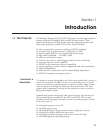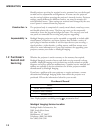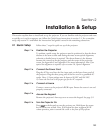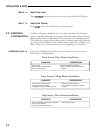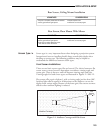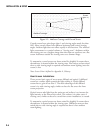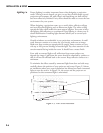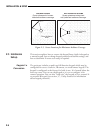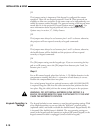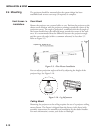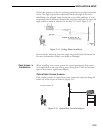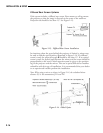
Figure 2-4. Good Screen Placement
Other ➤
Considerations
Here are some other considerations and tips which can help you improve
the design of your projection system.
❑ Proper ventilation is important. The ambient temperature should be kept
constant and below 35° C (95° F). Keep the projector away from heating
and/or air conditioning vents. Changes in temperature can cause drifts in
the projector circuitry which may affect performance.
❑ Keep the projector away from devices which radiate electromagnetic
energy such as motors and transformers. Common sources of these
are slide projectors, speakers, power amplifiers, elevators, etc. Keep 35
mm slide projectors at least 2 feet away from the projector. Even if both
are not used at the same time, the magnetic fields created by the slide
projector can cause permanent magnetization of the projector.
❑ For rear screen applications, less space is required if a mirror is used to
fold the optical path.
❑ Choose the right screen size for your application:
• As screen size increases, magnification increases which reduces bright-
ness. This reduces the contrast ratio which affects legibility. Sharp
defined edges become soft and fuzzy. Consider whether screen size is
more important than these other vital picture characteristics.
• Installing a large screen in a small room is similar to watching televi-
sion close up; too large a screen can overpower a room. A good rule
of thumb is to be no closer than two times the height of the screen.
• Larger screens require greater attention to lighting conditions.
❑ When laying out your projection room, consider positioning the projector
and screen in a manner which will achieve maximum audience coverage
and space efficiency. For example, placing the screen along the larger wall
in a rectangular room will reduce audience coverage. Figure 2-5 shows two
examples of how audience coverage is maximized.
window
doordoor
Prime Audience
Area
INSTALLATION & SETUP
2.7



